Archaeological exhibition at National Museum of China marks its far-reaching influence forged over a century, Lin Qi reports.
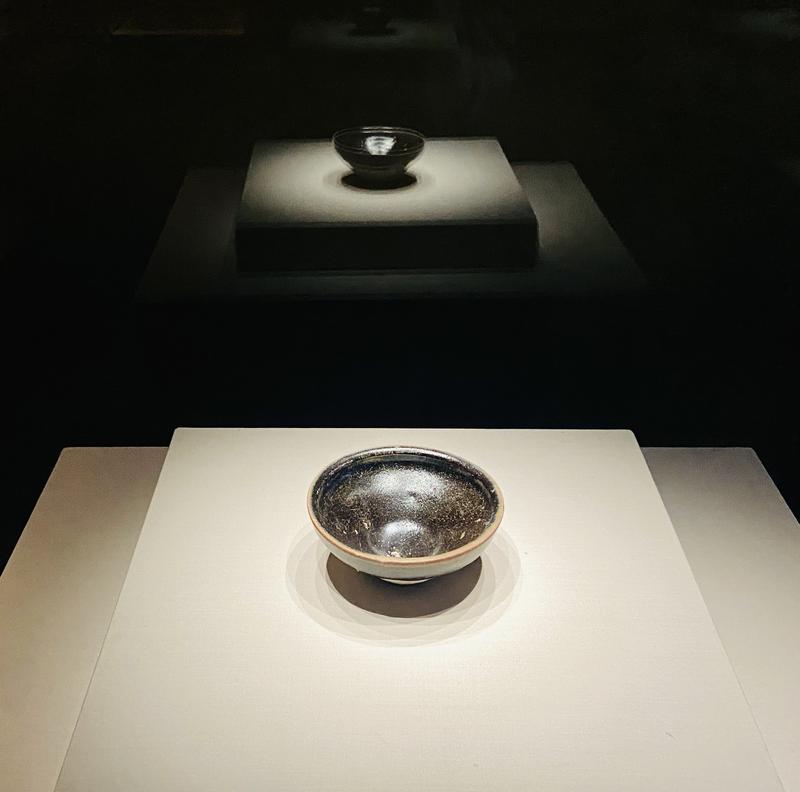 Exhibits include a black-glazed container called zhan dated between the 12th and 13th centuries. (LIN QI / CHINA DAILY)
Exhibits include a black-glazed container called zhan dated between the 12th and 13th centuries. (LIN QI / CHINA DAILY)
The cultural vibes of the Song Dynasty (960-1279), a high point in the country's social and economic prosperity, have staged a revival this year. A dance drama which was inspired by A Panorama of Rivers and Mountains, a 900-year-old landscape painting attributed to Song court painter Wang Ximeng, became a hit on China Central Television's Spring Festival Gala aired in late January. The performance has since kindled people's enthusiasm to imitate the dancers' challenging movements, or create works of art featuring the predominant blue and green hues in the painting, and to then share their creativity online.
In June, A Dream of Splendor, a costume drama also set during the Song Dynasty, generated another wave of popularity. The scenes of the heroine demonstrating traditional Chinese tea acrobatics drew audiences to the show as it aroused a deep and curious interest in Song social life.
Now, at an exhibition at the National Museum of China, people can again have a chance to savor the dynamics and variety of life at that time.
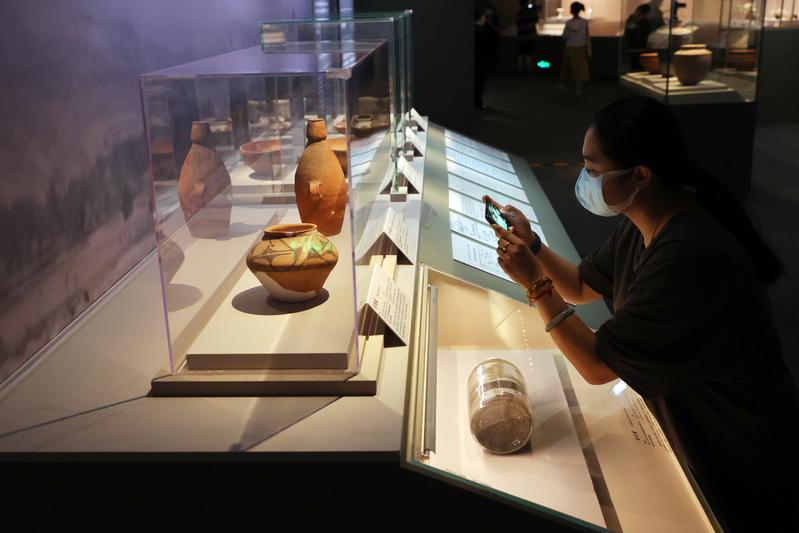 Archaic pottery displayed at the National Museum of China. (JIANG DONG / CHINA DAILY)
Archaic pottery displayed at the National Museum of China. (JIANG DONG / CHINA DAILY)
On show are porcelain items-one of the empire's brilliant products-including tea cups, incense burners, bottles and bowls, which take on different color glazes and were unearthed from the relic site of the Julu ancient city, in today's Julu county under the administration of Xingtai city, Hebei province.
The exhibition, Profound Accumulation, Far-reaching Influence, is dedicated to the museum's archaeology work over the past century.
Running through to early October, it gathers objects found at major excavations in which the National Museum of China has participated since its inauguration in 1912. It was then called the preparatory office of the National Museum of History, located at Guozijian, the Imperial College, in Beijing.
Objects excavated at the ancient city of Julu on display include a set of ceramic black and white Go pieces. Early records of this board game are dated to the Eastern Zhou Dynasty (770-256 BC), and it was a major source of entertainment during the Song era.
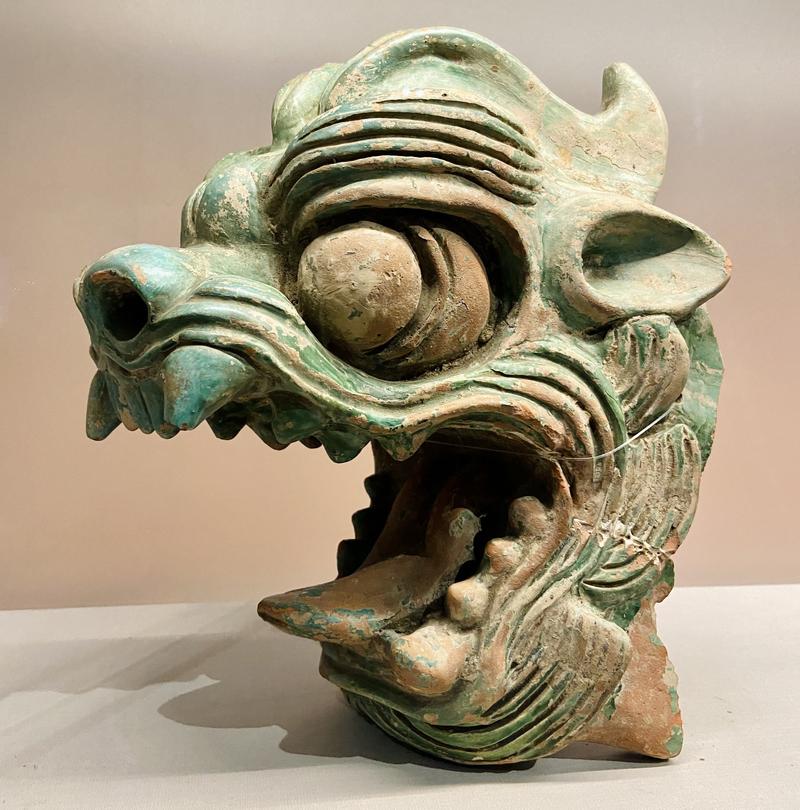 Exhibits include a dragon-shaped roof ornament. (LIN QI / CHINA DAILY)
Exhibits include a dragon-shaped roof ornament. (LIN QI / CHINA DAILY)
Other unique exhibits include a wooden bead from an abacus, measuring about two centimeters in diameter, which is believed to be one of the earliest of its kind in China. Also of particular interest are a bronze mirror on the back of which were cast the characters, changming fugui, meaning longevity and wealth, and a green-glaze pottery roof component that resembles the head of chiwen, a mythological beast which became a common architectural decoration and was said to protect dwellers from fire.
These artifacts all came from an archaeological excavation in 1921 at what used to be the residences of two families surnamed Dong and Wang. The two mansions were reduced to ruins in 1108 after dams on the Yellow River were breached and the surge destroyed Julu.
Around 1915, people began to dig out objects that bore testimony to Julu's existence and its exquisite art. Seven years later, an archaeological team, led by Qiu Shanyuan on assignment for the museum, then the National Museum of History, arrived at the site to carry out excavation and to protect artifacts from being removed.
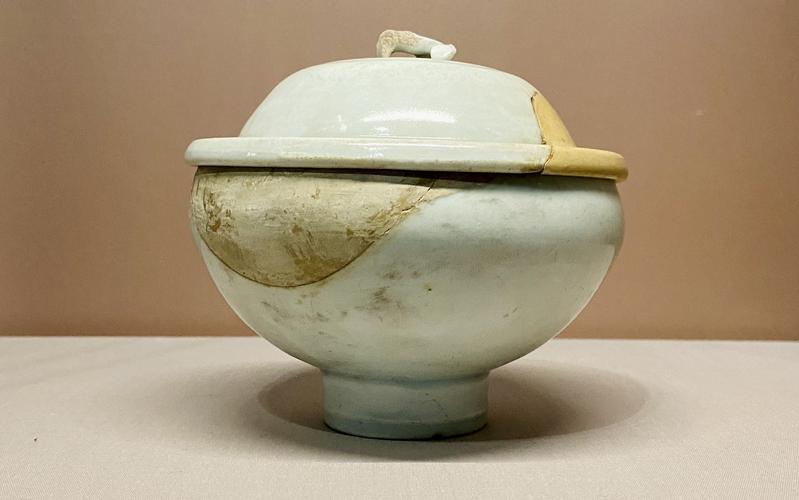 Exhibits include a porcelain bowl from the Northern Song Dynasty (960-1127). (LIN QI / CHINA DAILY)
Exhibits include a porcelain bowl from the Northern Song Dynasty (960-1127). (LIN QI / CHINA DAILY)
What Qiu and his team did marked a critical moment in the establishment of modern archaeology in China. Also in 1921, a team led by Johan Gunnar Andersson from Sweden excavated the Neolithic Yangshao site in Henan province. This work was regarded as the beginning of Chinese archaeology and the efforts of the museum's team in Julu also helped pave the way to a greater understanding of the past.
The current exhibition is one of a series of events to celebrate the National Museum of China's 110th anniversary. More than 240 objects, mostly from its own collection, are on display and include those from some 70 archaeological excavations and surveys the museum has organized or taken part in across the country.
"It is an opportunity for the National Museum of China to share with the public what it has done in archaeology and what it has assembled as vivid examples of Chinese civilization throughout the decades," says Chen Keshuang, the exhibition's curator. The exhibits, he adds, are of varying categories and phases of Chinese culture and also demonstrate technological progress to aid archaeological undertakings being carried out on land, from the air and underwater.
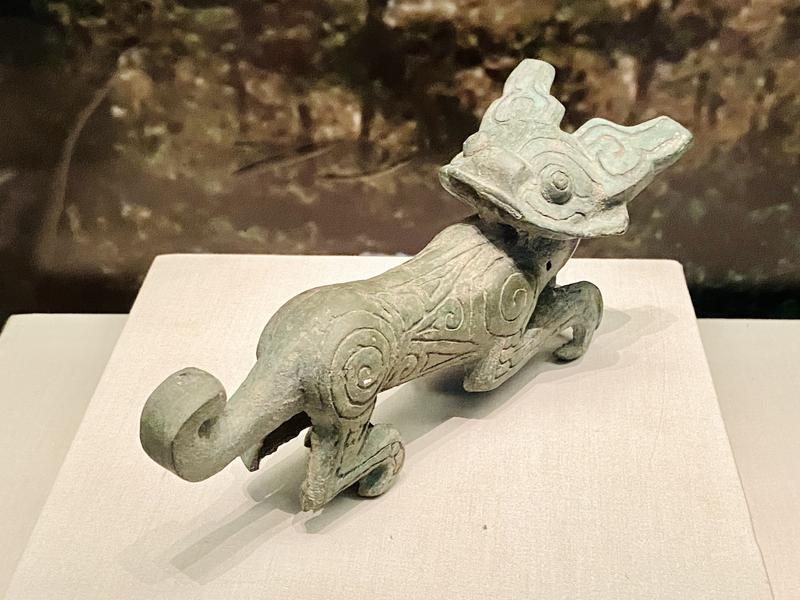 A tiger-shaped bronze musical instrument from the Spring and Autumn Period (770-476 BC) on show at the National Museum of China. (LIN QI / CHINA DAILY)
A tiger-shaped bronze musical instrument from the Spring and Autumn Period (770-476 BC) on show at the National Museum of China. (LIN QI / CHINA DAILY)
He expands on the finds. "A carbonized foxtail millet found at the Bancun site, in Henan province, which mainly belongs to the Yangshao Culture, was one of the first indications of Chinese civilization," Chen says. "Other must-see exhibits include bronze triple-foot ding vessels and a composite skeleton of Paracamelus gigas, an extinct genus of camel dating back about 1.8 million years to the early stage of Paleolithic age, found in Liaoning province."
It is a celebration, Chen says, of the efforts made to trace the origin and evolution of Chinese civilization, as well as its diversity, unity and exchanges with other cultures in the world.
Objects from several excavations from shipwrecks on show exemplify the museum's work in underwater archaeology. It set up the country's first research center dedicated to the field in 1987, and this has facilitated the studies of the shipbuilding industry, marine technology, overseas trades, ceramics export in ancient China, as well as the preservation of underwater heritage.
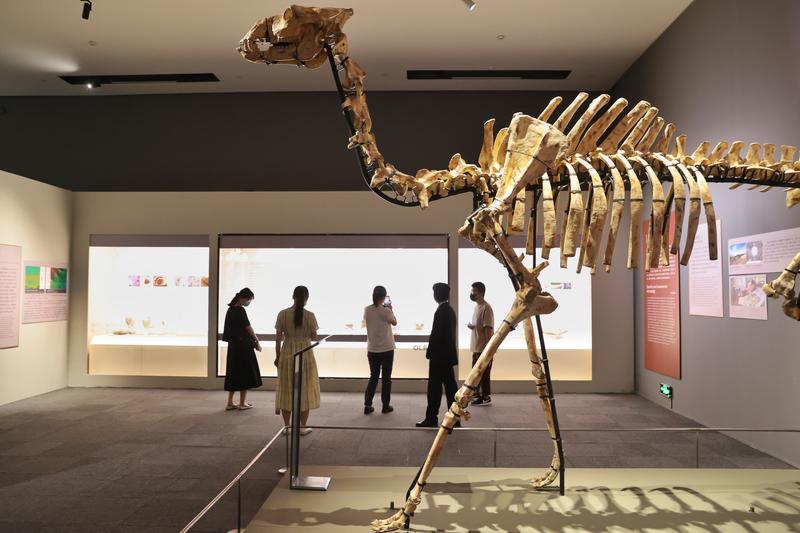 A composite skeleton of a Paleolithic period camel is also on show. (JIANG DONG / CHINA DAILY)
A composite skeleton of a Paleolithic period camel is also on show. (JIANG DONG / CHINA DAILY)
The fruits of the museum's labors are vividly presented at the exhibition, which shows a Yuan Dynasty (1271-1368) ceramic jar patterned with a dragon and a phoenix between ink flowers against a white background and a basin decorated with fish swimming in algae. They were unearthed from a sunken Yuan-era merchant vessel after a six-year-long excavation undertaken by the National Museum of China and other institutions, in the 1990s, in Bohai Bay. The work uncovered more than 600 objects, most of which were ceramics from the prestigious Cizhou kilns, in today's Hebei province, and it was ranked among the top 10 archaeological discoveries in China in 1993.
And porcelain excavated from the Baijiao No 1 Shipwreck, in Dinghai Bay, Fujian province, is also on display. Beginning in 1989, it was one of the country's first underwater archaeological sites. Several excavations over the years also involved cooperation with Australian counterparts from the University of Adelaide and the Western Australian Maritime Museum.
Zhuang Lina from the National Museum of China's archaeology institution says that over the years they have been pursuing a cross-disciplinary working method, and pushing forward the integration of technology into archaeological excavations, which have become a new tradition of the museum so as to better serve the country and its people.
Contact the writer at linqi@chinadaily.com.cn


